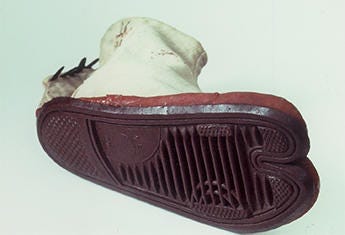This article owes a debt to my local mechanic. At my annual car registration, I was instructed to replace my tyres. While deliberating over which one (not that I could tell the difference outside ¥), I thought I spotted something peculiar. Why was Bridgestone at a comparable price to classic Japanese tyre brands like Yokohama or Toyo?
The mechanic told me something that shattered my entire (pardon the pun) existence. “Bridgestone is Japanese!”
All my life I was living without this crucial piece of knowledge. Well armed with this, I wanted to look into how Bridgestone became the company synonymous with tyres, all while keeping an ambiguous origin story.
Early tracks
The story of the name dates back to the founder Shojiro Ishibashi. Those astute Japanese speakers will pick up on his last name (石橋), which directly translates to Stone Bridge. The even more astute may make that connect to the current name Bridgestone.
For young Shojiro, he always sought greener pastures. His family had origins as tailors (not bridgemasons), and he got interested in the sock side of clothes. Not just any sort of sock but the Japanese Tabi sock. These socks are particular styles which allow for greater great toe movement, and are perfect for wearing with traditional footwear.
It was this decision to focus on the Tabi sock that led to the Bridgestone we all know today. You may not have been keeping up with the latest Tabi trends during the 1910’s, but there was a revolution afoot. The traditional Tabi, long separate from its partner, the shoe (often zori), was joining forces. This meant rubber soles were attached directly to the tabi sock.
Tire tangents
So while this whole origin backstory on socks is cute, what does any of that have to do with Bridgestone? Well the main word from the previous section was rubber. This was the first but not last venture where old Shojiro Ishibashi would be dealing with the rubbery substance.
Yes, he rolled into the tyre-making space. This came with its own difficulties, but (spoiler alert) it all proved rewarding. Their story in these early tyre years were not so interesting, primarily involving keeping quality high, and costs low. As one of the earlier manufacturers of tyres, especially in Japan, this proved to be a winning way.
Then the war. Suddenly, almost all industrial output in Japan was focused on one thing. The war. Tyres were especially important, as many war vehicles still rolled. Upon the conclusion of the war, Bridgestone became a central component of the Japanese economy.
Reinventing the Wheel
After all, Japan started having its own car manufacturers. Luckily for Bridgestone, the Japanese consumers wanted Japanese cars with Japanese tyres. Sure there were innovations in these years to the actual quality of the tyre, but no one really checks. Some people might brag about their new car, new house or even new computer. But tyres?
So Bridgestone set out to not be flashy. They had the right environment too with Honda and Toyota, two brands not synonymous with flashy. Instead, it was all about that now famous work culture. The Japanese model for their industrial behemoths was mastering the balance between cost, durability, and performance. In other words, creating an achievable mid-to-low-cost product without massively sacrificing quality. This relies on mastering the manufacturing and keeping everything very efficient.
It was a playbook that Yokohama, Toyo, and Sumitomo would soon follow, but Bridgestone had one more move.
Going global. The English name already helped, but they had eyes on conquering the world. Until the 1980’s, Bridgestone were just another one of the many trying tyre brands. And no one cares about tyre companies.
Then they came for America.
In 1988, Bridgestone pulled off the equivalent of running over Abraham Lincoln. It acquired Firestone, one of America’s most historic tire brands. Of course, back in those days there was no real geopolitical tensions to speak about, so it went over smoothly. While tyre company 1 buying tyre company 2 doesn’t seem to be worth writing about outside of Tyres Quarterly, this was a then-Japanese record for purchasing any company. This was like Toyota buying General Motors, or Sony acquiring IBM. Or Nippon Steel acquiring US Steel.
It was maybe the largest statement by any Japanese company that they weren’t just happy with the domestic market. They were going for the world. This capture was a turning point for the Japanese commercial world, signalling dominance by a Japanese company in an industry that everyone needed. Sure, previous Japanese firms could claim they were the biggest wasabi manufacturer, but that’s like Inuit Inc’s greatest igloo builder title.
Bridgestone managed to be the boring company that everyone needs. Rather than being the flashy Japanese tech giant, the slow roll toward dominance started with a pair of socks. Unlike many Japanese brands that struggle with overseas recognition, Bridgestone has managed to embed itself into global markets so seamlessly that many people (including me) don’t even realise it’s Japanese. As such, maybe it is the most Hidden of all Japan, when they are just there in plain sight.





I would have liked to see a mention here of Bridgestone’s bicycle division, which is well loved and respected by vintage bicycle enthusiasts.